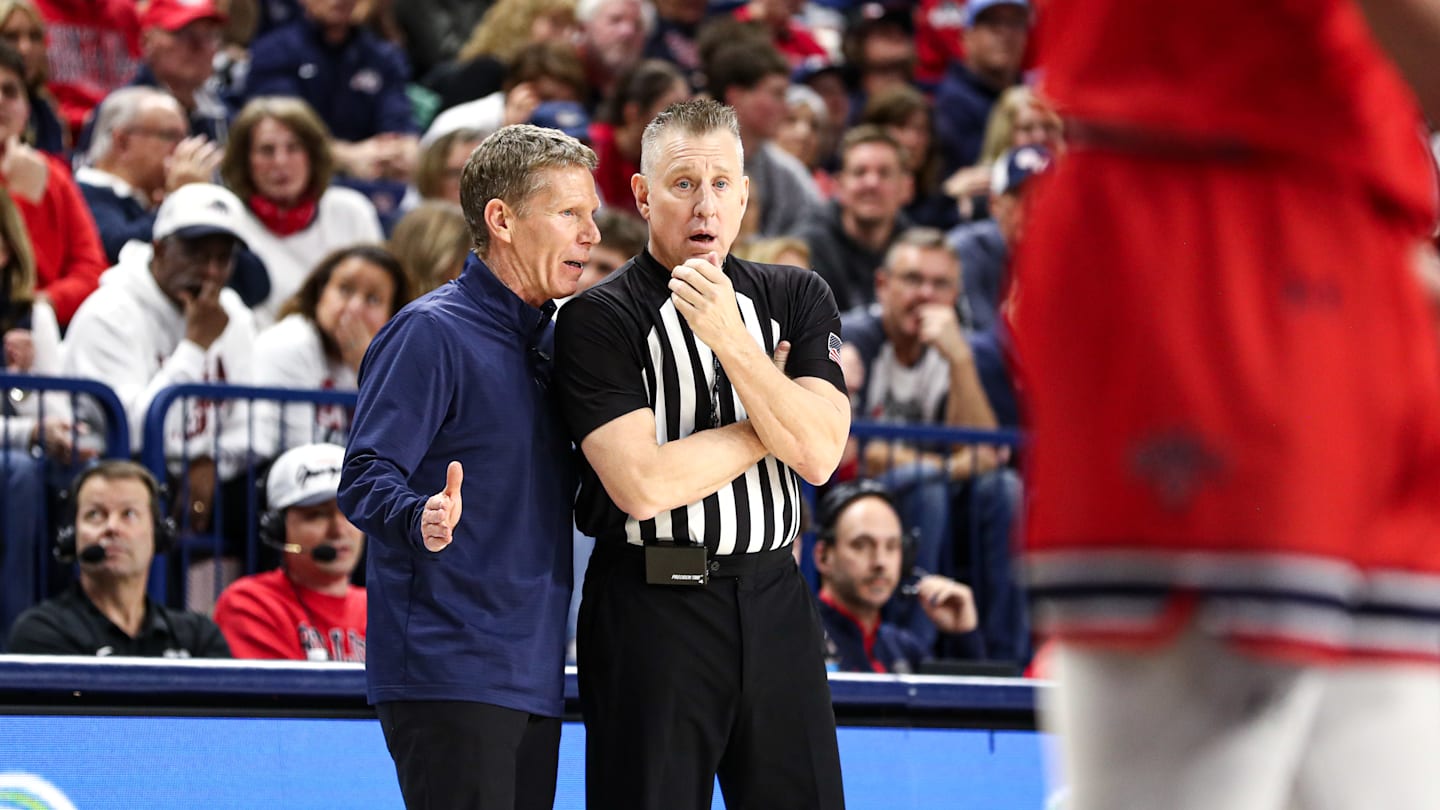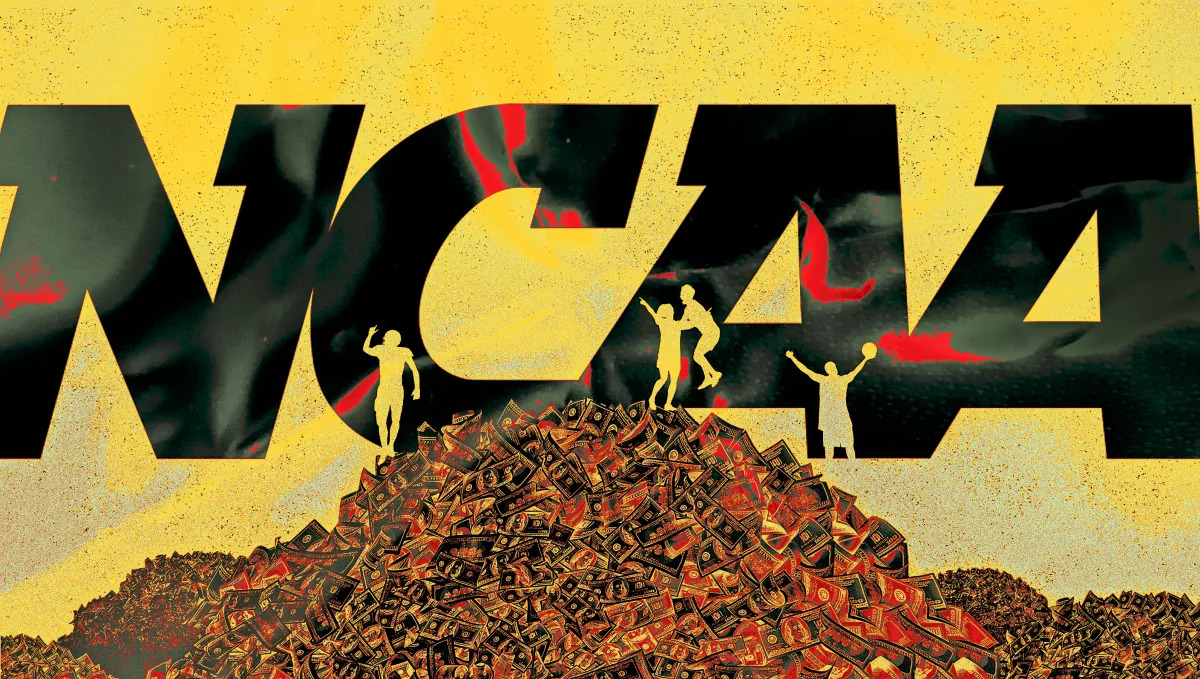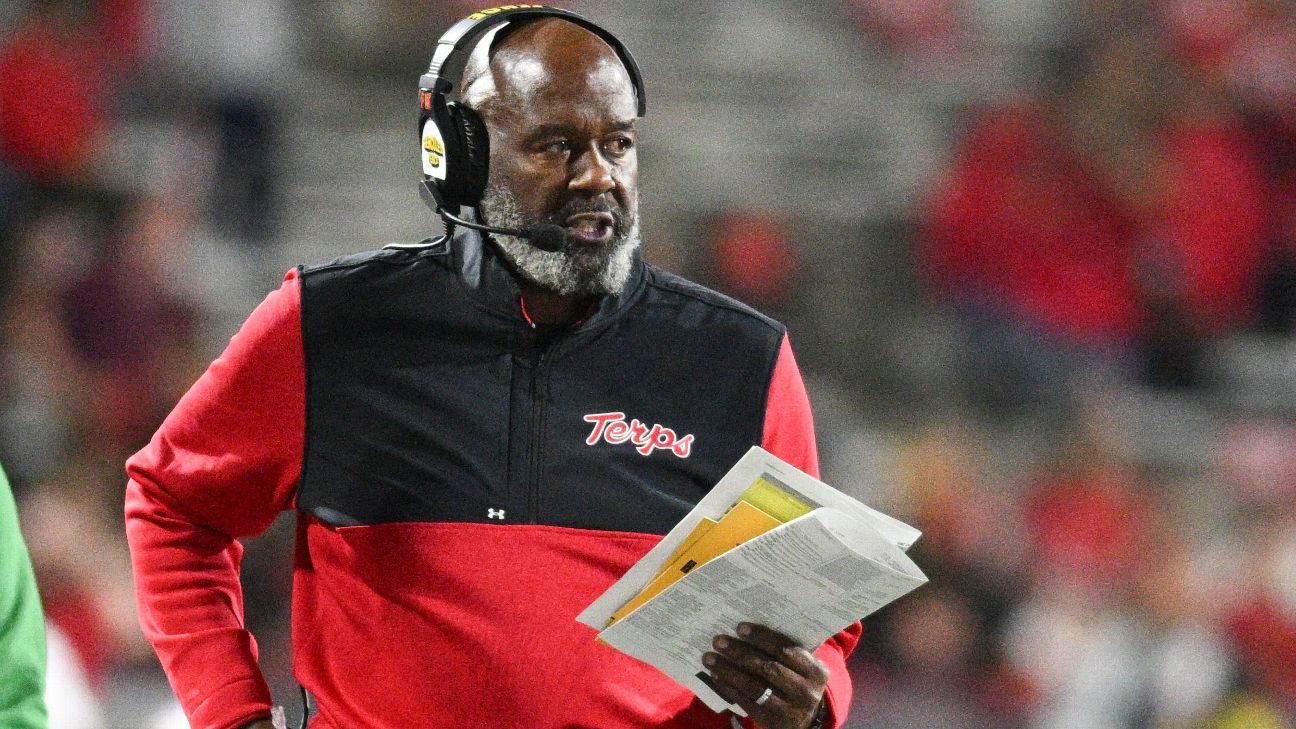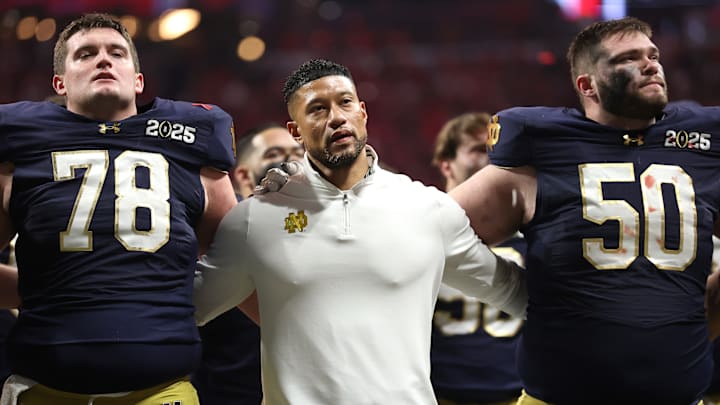NIL
NCAA allowing college basketball schedule to expand starting 2026-27 season
Gonzaga’s midseason showdown with Kentucky during the heat of the 2023-24 campaign was a rare instance of two college basketball heavyweights setting aside their conference obligations to deliver a thrilling nonleague matchup in the weeks leading up to the postseason. Up until that point, marquee nonconference games were mostly reserved for November and December, when […]

Gonzaga’s midseason showdown with Kentucky during the heat of the 2023-24 campaign was a rare instance of two college basketball heavyweights setting aside their conference obligations to deliver a thrilling nonleague matchup in the weeks leading up to the postseason.
Up until that point, marquee nonconference games were mostly reserved for November and December, when the college basketball calendar is at its most flexible. But in light of a recent proposal that, if approved, would extend the sport’s regular season by one game, more high-profile contests like the one between the Bulldogs and Wildcats in February 2024 could become more commonplace in the future.
According to a report from CBS Sports’ Matt Norlander, the NCAA Division I Council will approve an increase from 31 to 32 games beginning with the 2026-27 season. Teams will be allowed to schedule up to one more game, barring any last-minute vetoes, but won’t be forced to play out a full 32-game schedule if they choose not to. Contests against non-Division I opponents will also count toward the total.
An expanded schedule would mean that teams that advance to the National Championship game could play up to 41 games during that season. No team has ever crossed the 40-game threshold to this point.
Per Norlander, the driving factor behind the push for 32 games is tied to multi-team events and their increasingly restrictive guidelines stemming from conference expansion, which has led to schools in the same league competing against each other in some events. That was previously not allowed but has since been changed through a waiver process. It’s also worth noting that lengthening the schedule will allow MTEs like the NIL-driven Players Era Festival to schedule three- or four-game tournaments.
Players Era is set for a second run this November with 20 participants, including Gonzaga, and is hoping to grow to 32 teams by 2026.
Of course, money is also at the forefront. In addition to freeing up more opportunities for lucrative neutral site contests, moving to 32 games will allow programs to host one more home game. With the House settlement ushering in revenue sharing for college athletes, teams will certainly be looking for more ways to create revenue.
The maximum games a team can play in a season was set at 31 in 2006-07. The format was 28 or 29 predetermined games with room for three-game or two-game multi-team events if applicable, making it a 31-game cap.
The switch to 32 games would align with Gonzaga’s move to the Pac-12 conference, which is to be made official on July 1, 2026. Only time will tell how the league arranges its conference schedule for men’s basketball, as the Pac-12’s current priorities are to find another football-playing school to join as a full-time member.
MORE GONZAGA NEWS & ANALYSIS
NIL
House attorneys, power conferences work out deal to relax NIL collective roadblocks: Sources
LAS VEGAS — Less than a month into the implementation of the House settlement, college sports’ new enforcement entity is adjusting its approach. Attorneys for the House plaintiffs have struck an agreement with the power conferences and NCAA officials to amend the decision-making from the industry’s new enforcement arm, the College Sports Commission, related to […]

LAS VEGAS — Less than a month into the implementation of the House settlement, college sports’ new enforcement entity is adjusting its approach.
Attorneys for the House plaintiffs have struck an agreement with the power conferences and NCAA officials to amend the decision-making from the industry’s new enforcement arm, the College Sports Commission, related to how booster-backed collectives can compensate athletes. Multiple sources spoke to Yahoo Sports under condition of anonymity.
Advertisement
As part of the agreement, the College Sports Commission is expected to treat collectives or any “school-associated entity” in a similar fashion as other businesses when determining the legitimacy of third-party NIL deals submitted to the CSC’s NIL Go clearinghouse.
This is a change from the CSC’s previously publicized approach.
According to a memo sent to schools two weeks ago, the CSC — created and administered by the power conferences — explained that it has denied dozens of athlete deals from collectives because it is holding collectives to a higher threshold, announcing that businesses whose sole existence is to pay athletes (i.e. collectives) cannot meet the definition of a “valid business purpose.”
House plaintiff attorneys Jeffrey Kessler and Steve Berman took issue with that interpretation, sending to the NCAA and power league officials a letter demanding the guidance be retracted and suggesting those rejected deals be reinstated. Kessler, in his letter, threatened to take the issue to the magistrate judge, Nathanael Cousins, who is presiding over House settlement disputes.
Advertisement
Some of the NIL deals that the CSC rejected while applying the previous guidance will be re-evaluated based on the new approach.
[Join or create a Yahoo Fantasy Football league for the 2025 NFL season]
A spokesperson for the power conferences and the CSC said conversations with class counsel “remain ongoing.” A formal statement will be issued when the issue has been resolved.
The interpretation of the “valid business purpose” rule is not insignificant.
It is one of two measurements used by the new CSC’s NIL Go clearinghouse to determine the legitimacy of third-party deals. The second is a Deloitte-created “compensation range” standard that deals must fall within.
Advertisement
The change to the valid business purpose standard potentially opens the door for the continuation of school-affiliated, booster-backed collectives to provide athletes with compensation that, if approved by the clearinghouse, does not count against a school’s House settlement revenue-share cap. This provides collectives a path to strike deals with athletes as long as those transactions deliver to the public goods and services for a profit for the organization, such as holding athlete merchandise sales, autograph signings and athlete appearances at, for example, golf tournaments.
The resolution creates what administrators term more of a “soft cap” as opposed to a hard cap, as SEC commissioner Greg Sankey described it last week in an interview with Yahoo Sports. The expectation is that collectives will create legal ways to provide additional compensation, as Big Ten commissioner Tony Petitti described Monday in an interview with Yahoo Sports from Big Ten media days.
“When something works, it gets copied,” he said. “Things happening out there to provide additional NIL deals for student athletes that make sense and are allowed under rules, you’re going to see more versions of that.”
The change also, at least for now, prevents a legal challenge from leaders of a group of NIL collectives who began drafting a lawsuit against the CSC’s approach. Over the last four years, collectives have served as the driving force for schools to compensate athletes, raising millions in booster money to provide schools a way to recruit and retain players.
Advertisement
However, the CSC’s original interpretation of the “valid business purpose” definition, and resulting denials of collective deals, speaks to one of administrators’ goals of the settlement — to shift athlete pay from these booster-run organizations to the schools, which are now permitted to directly share revenue with athletes under the capped system that began July 1. That said, many schools are still operating their collectives as a way to, perhaps, circumvent the system.
For example, schools continue to operate their collectives — some out of fear that others are doing the same and some believing that the settlement will fail under the weight of legal challenges.
Advertisement
“We know that some people are saying, ‘We’re not worried because we don’t think they can really enforce it.’” Ole Miss coach Lane Kiffin told Yahoo Sports last week from SEC media days. “They don’t think NIL contracts are going to get kicked back [by the clearinghouse] or they think they’re not going to be able to win long-term [legal challenges] because of players rights.”
Ultimately, Sankey suggested, schools hold authority to control their own affiliated collectives.
“For how long have people been begging for guardrails?” Sankey asked. “Well, now we have guardrails. Those broadly across the country that claim they wanted guardrails need to operate within the guardrails. If you allow what’s happened to continue to escalate, there would be a very small number of programs that would be competitive with each other and we’d not have a national sport or a national championship.”
The resolution may not completely end what will likely be continuous negotiations over particular enforcement rules between the power leagues controlling the CSC and the House plaintiff attorneys, who hold authority and veto powers over various aspects of the settlement.
Advertisement
Petitti cautioned Tuesday that more such negotiations are expected in the future.
“I don’t think it will be the last time that an issue comes up in the process,” he said. “The settlement approval came later than expected. It compressed the time period.”
The guidance change may also not prevent future legal challenges over other enforcement aspects, including Deloitte’s compensation range concept or the appeals arbitration system that athletes can use for deals denied a second time.
The CSC, in its first month of existence, is reliant on athletes submitting deals. Athletes are required to submit any third-party deal of $600 or more to an NIL clearinghouse, NIL Go. Those deals flagged by NIL Go are sent to the CSC and its new leader, Bryan Seeley, to determine an enforcement decision. As of two weeks ago, more than 100 deals were denied and at least 100 more were under review. More than 1,500 deals had been approved.
NIL
It’s Not What Most Schools, Including Oklahoma State Wanted to Hear
STILLWATER – We first got word on this with a text message from and Oklahoma State head coach: “That didn’t take long.” He’s right. It has been less than a month since the implementation of the House vs. NCAA settlement and college sports unleashing it’s new entity to police out-of-line and frivolous NIL deals, the […]

STILLWATER – We first got word on this with a text message from and Oklahoma State head coach: “That didn’t take long.” He’s right. It has been less than a month since the implementation of the House vs. NCAA settlement and college sports unleashing it’s new entity to police out-of-line and frivolous NIL deals, the College Sports Commission. The attorneys for the House plaintiffs have struck an agreement with the representatives of the power conferences and the NCAA to soften the soften the enforcement of NIL deals and the continued involvement of collectives outside the schools and funded by boosters and fans.
Yahoo first reported the agreements and received the information from sources that spoke under the term of maintaining anonymity.
Part of the agreement has the College Sports Commission treating collectives or any “school-associated entity” in a similar fashion as other businesses in evaluating the legitimacy of third-party NIL deals submitted to the CSC’s NIL Go clearinghouse.
The power conferences and their leadership including commissioners like the Big 12’s Brett Yormark and today in Charlotte, N.C. and the comments of ACC commissioner Jim Phillips were urging schools to abide by the somewhat salary cap-like terms of the $20.5 million in revenue sharing.
This process started with the discovery of a memo sent out to schools two weeks ago regarding the CSC and their purpose, explaining that it has denied dozens of athlete deals from collectives because it is holding collectives to a higher threshold, announcing that businesses whose sole existence is to pay athletes (i.e. collectives) cannot meet the definition of a “valid business purpose.”
The House plaintiff attorneys caught wind of that memo and immediatley went into action to have the definition of the CSC’s role and ability to discard those deals refined and held closer to the standard int he original ruling by the Federal Judge Claudia Wilken.
There will be more to this case, before anything is released and an official definition is established, but this is moving back toward the climate that schools like Texas Tech; Miami, Fla; Ohio State; Oregon; and others were enjoying and taking advantage of.
NIL
Kentucky’s (Austin) Pope Takes Job with the Lakers
Minutes before the 2014 National Championship game, Kentucky fans feared their head coach was leaving Lexington to coach the Los Angeles Lakers. It was a “done deal,” according to Rex Chapman. A decade later, Mark Pope is fired up to lead the Wildcats into his second season with the program. Another Pope from Kentucky is […]

Minutes before the 2014 National Championship game, Kentucky fans feared their head coach was leaving Lexington to coach the Los Angeles Lakers. It was a “done deal,” according to Rex Chapman.
A decade later, Mark Pope is fired up to lead the Wildcats into his second season with the program. Another Pope from Kentucky is joining the Lakers’ organization. This time, it actually is a done deal.
Austin Pope (no relation) was a graduate assistant during Mark Pope’s first season in Lexington. Next year, he’s returning to the West Coast as the head video coordinator for the South Bay Lakers, L.A.’s G League affiliate. The Burbank native couldn’t pass up the opportunity to join the team he grew up idolizing.
“It means everything,” Pope told SB Nation. “I was born a Laker. People say that all the time with their fandom and things, but it’s just unreal. I feel super grateful, man. My mom, when I was a baby in her stomach, I used to go to games at The Forum and as a young kid I would go to church at The Forum and go to games, followed Magic, Byron Scott and Michael Cooper. So for me, it’s a full-circle moment to work in the organization.
“I played Burbank YMCA (when I was young) and had all these Junior Lakers jerseys and pictures, so just full circle working in the place that you kind of were born into and was in your backyard. And Kobe being my G.O.A.T. and my favorite (player), come on, man. I’m overjoyed.”
Austin Pope played junior college basketball, then concluded his career at Chaminade University. He spent two years coaching high school hoops before cracking into the college ranks last season at Kentucky. Pope received valuable experience in Lexington. Best of luck to him on the West Coast.
More Kentucky News and Views on the KSR YouTube Channel
Kentucky Sports Radio has expanded its coverage of the Wildcats in the most ridiculous manner possible on our YouTube Channel. Here you will be able to find interviews with coaches and players, as well as commentary from the KSR crew. From Rapid Reactions following big events to our lengthy lineup of live shows, subscribe to the KSR YouTube Channel to stay up to date on everything happening around the Big Blue Nation.
NIL
Maryland’s Locksley: Lost locker room over player compensation
Adam RittenbergJul 22, 2025, 09:02 PM ET Close College football reporter; joined ESPN in 2008. Graduate of Northwestern University. LAS VEGAS — Maryland football coach Mike Locksley admitted Tuesday he “lost” the locker room in 2024 over which players to compensate, a factor that led to the Terrapins’ worst season since his debut in 2019. […]

LAS VEGAS — Maryland football coach Mike Locksley admitted Tuesday he “lost” the locker room in 2024 over which players to compensate, a factor that led to the Terrapins’ worst season since his debut in 2019.
The Terrapins finished 4-8 and dropped all but one of their Big Ten contests. Maryland had more players selected in the NFL draft (six) than wins, as it lost its final five games, all by 14 points or more. Locksley attributed part of the struggles to the changing financial landscape in college football, as Maryland had to make decisions on how to compensate players through NIL deals and ultimately created some divisions.
“I own the fact that I lost my locker room,” Locksley told ESPN. “And this is Coach Locks, the locker room king, telling you this landscape, I had to choose between paying young players who were coming in or reward the older players that have been through the fire, three bowl wins, and I tried to do both with limited resources. And that’s what you get: a locker room with the haves and have-nots.”
Locksley, who is entering his seventh season at Maryland and 10th overall as an FBS coach, called the experience “a valuable lesson” in how to manage players, relationships and expectations. Maryland won three consecutive bowl games under Locksley, from 2021 to 2023.
“You go outside my locker room 1753238805 and I have a sign that says: ‘Leave your Louis belts, leave your financial statements and your car keys outside of this locker room, because in here we’re all going to pay the same price for success or failure,'” he said. “If I’ve got to put my desk in that locker room, I will. A valuable lesson learned.”
Locksley said the House settlement and the money Maryland distributes to its players have allowed him to focus more on the locker room rather than external fundraising.
Maryland will enter the season with questions at quarterback — where UCLA transfer Justyn Martin, redshirt freshman Khristian Martin and decorated incoming freshman Malik Washington, ESPN’s No. 134 overall recruit, will compete — and other positions.
“I call this a year of vulnerability for me, because I’ve been torn about what to say about our team when people ask; but I don’t know what type of team we have yet,” he said. “Some people, as a coach, it’s like a bad thing to say, ‘I don’t know.’ But it’s a good thing that I don’t know.”
NIL
LaNorris Sellers explains decision to turn down big offers to transfer in the offseason
This offseason, LaNorris Sellers reportedly turned down an $8 million NIL deal to transfer away from South Carolina. Despite this, he’ll be suiting up for the Gamecocks in just over a month’s time. When that report was released in June, it raised more than a few eyebrows. After all, this comes during an era in […]

This offseason, LaNorris Sellers reportedly turned down an $8 million NIL deal to transfer away from South Carolina. Despite this, he’ll be suiting up for the Gamecocks in just over a month’s time.
When that report was released in June, it raised more than a few eyebrows. After all, this comes during an era in college football where money can lure anyone anywhere, Sellers’ decision boiled down to one simple reason.
“It’s close to home,” Sellers told Rob Stone, along with Mark Ingram and Urban Meyer on the Triple Option podcast. “My parents come to all my games. I still go home for holidays like Christmas, Thanksgiving and all that. If I ever need something, I can just shoot over the road (and go) home. If they want to just come up here, just get away from home, they can come to me. Being around all of my family, that’s all I need.”
The alleged interest from other programs comes as he shot up draft boards after the 2024 season. After one season as the Gamecocks’ starter, the potential is there and many experts believe that Sellers has all of the intangibles that NFL scouts look for in a potential first-round quarterback. In turn, all eyes will be on Sellers when South Carolina takes the field each weekend this fall.
After redshirting during his true freshman season in 2023, Sellers didn’t disappoint during his first campaign as the Gamecocks starting QB. In 2024, Sellers completed 65.6% of his passes for 2,534 yards and 18 touchdowns compared to seven interceptions. He also finished as South Carolina’s second-leading rusher on the team with 674 yards and seven touchdowns last season.
Now that he’ll likely be a Gamecock for life based on his early 2026 NFL Draft projections, it’s time for Sellers to work on the little things to fine tune his game before turning pro. It’s been up to him to address some of the weak spots in his game in the meantime.
“Small things like anticipation, footwork and all that,” Sellers said. “Just building off of mistakes from last year just trying to fix them to get better at it for this year.”
South Carolina’s season begins on Sunday, Aug. 31 against Virginia Tech for the Aflac Kickoff inside Mercedes-Benz Stadium in Atlanta. Sellers will have multiple opportunities to prove himself against elite competition with matchups against the likes of LSU, Alabama and Clemson down the stretch
NIL
Ohio State prioritized 3
Jake TrotterJul 22, 2025, 09:03 PM ET Close Jake Trotter is a senior writer at ESPN. Trotter covers college football. He also writes about other college sports, including men’s and women’s basketball. Trotter resides in the Cleveland area with his wife and three kids and is a fan of his hometown Oklahoma City Thunder. He […]


LAS VEGAS — Ohio State coach Ryan Day reiterated Tuesday that the Buckeyes didn’t add a transfer portal quarterback this offseason because they want to develop the three talented passers they already have on campus.
Sophomore Julian Sayin is battling junior Lincoln Kienholz and true freshman Tavien St. Clair for the starting job as the Buckeyes look to replace Will Howard. After transferring from Kansas State in January 2024, Howard quarterbacked Ohio State to its first national championship in a decade in his lone season with the Buckeyes.
“When we have to, or when we’re left in that situation, we will [bring in a transfer quarterback],” Day said during Big Ten media days. “But we want to develop guys, and these are three guys we want to continue to develop.”
Sayin was the nation’s top-rated quarterback in the 2024 recruiting class. After initially signing with Alabama, the 6-foot-1, 203-pound Sayin transferred to Ohio State once coach Nick Saban retired.
“Julian certainly gets the ball out quickly,” Day said. “He’s had a good offseason. He’s intelligent. He’s very competitive. He’s got good athleticism. He’s accurate.”
But the 6-3, 207-pound Kienholz pushed Sayin in the spring and will have an opportunity in the preseason to win the job. Kienholz, only the second player to sign with the Buckeyes from the state of South Dakota, was a multisport star in high school.
“Just a tremendous athlete,” Day said of Kienholz, who has been in the program for three years. “You pick a sport, he can do it. He’s like a four handicap [in golf]. He can hit the [baseball] out of the park. He was a major league baseball prospect. He can windmill dunk. He can do a lot of things.”
Because he arrived on campus only earlier this year, St. Clair remains behind in the competition. But he was the nation’s No. 10 overall recruit and the gem of Ohio State’s incoming recruiting class.
“He certainly has the size, the makeup,” Day said of the 6-4, 225-pound St. Clair. “He’s a great young man. He’s very intelligent. He’s athletic. He can throw the ball. I think he’s got a really bright future ahead of him. …
“They’re all exciting guys.”
Day declined to give a timetable of when he might announce a starter ahead of the Buckeyes’ blockbuster opener against Texas on Aug. 30 — a rematch of last season’s playoff semifinal.
“I think it’s important for the locker room to believe in whoever that is,” Day said. “When the locker room believes in that guy, that’s the right time. … So we’ll see where this goes.”
-

 College Sports2 weeks ago
College Sports2 weeks agoWhy a rising mid-major power with an NCAA Tournament team opted out of revenue-sharing — and advertised it
-

 Motorsports3 weeks ago
Motorsports3 weeks agoTeam Penske names new leadership
-

 Youtube3 weeks ago
Youtube3 weeks ago🚨 BREAKING: NBA MVP Shai Gilgeous-Alexander signs the RICHEST annual salary in league history
-

 Sports2 weeks ago
Sports2 weeks agoNew 'Bosch' spin
-

 Fashion1 week ago
Fashion1 week agoEA Sports College Football 26 review – They got us in the first half, not gonna lie
-

 Sports6 days ago
Sports6 days agoVolleyball Releases 2025 Schedule – Niagara University Athletics
-

 College Sports2 weeks ago
College Sports2 weeks agoMSU Hockey News – The Only Colors
-

 Sports2 weeks ago
Sports2 weeks agoE.l.f Cosmetics Builds Sports Marketing Game Plan Toward Bigger Goals
-

 Health1 week ago
Health1 week agoCAREGD Trademark Hits the Streets for Mental Health Month
-

 College Sports1 week ago
College Sports1 week agoBuford DB Tyriq Green Commits to Georgia



























